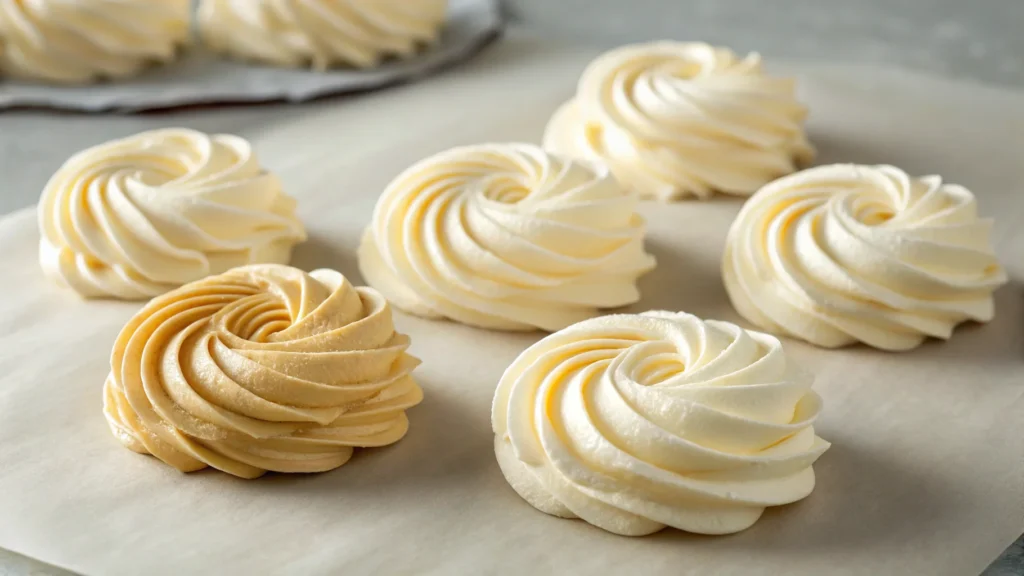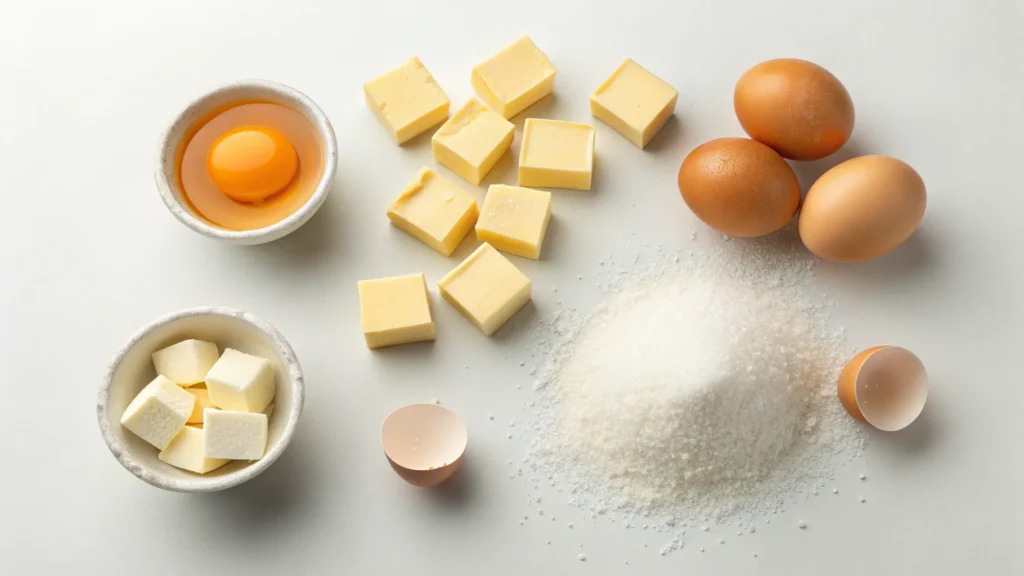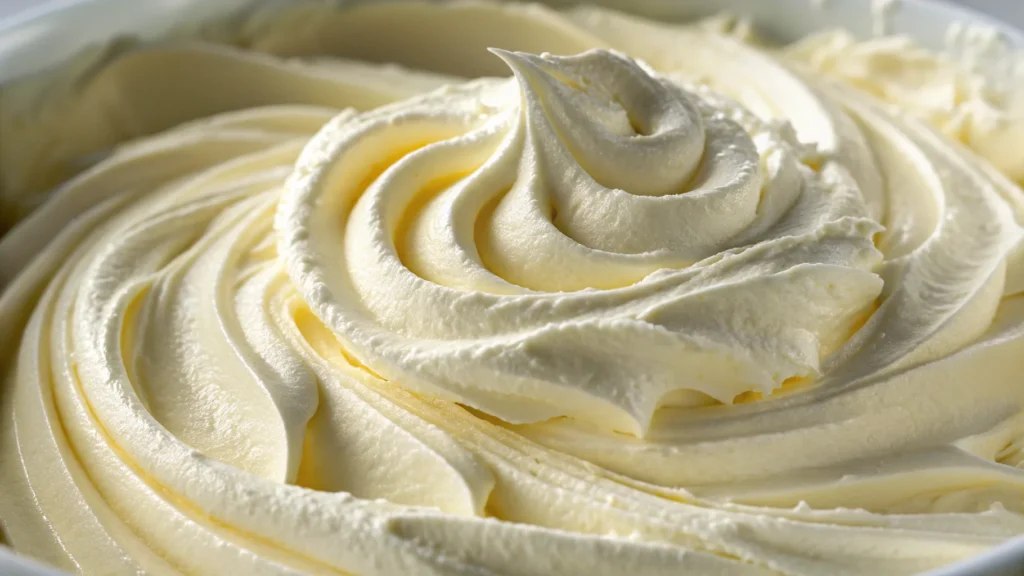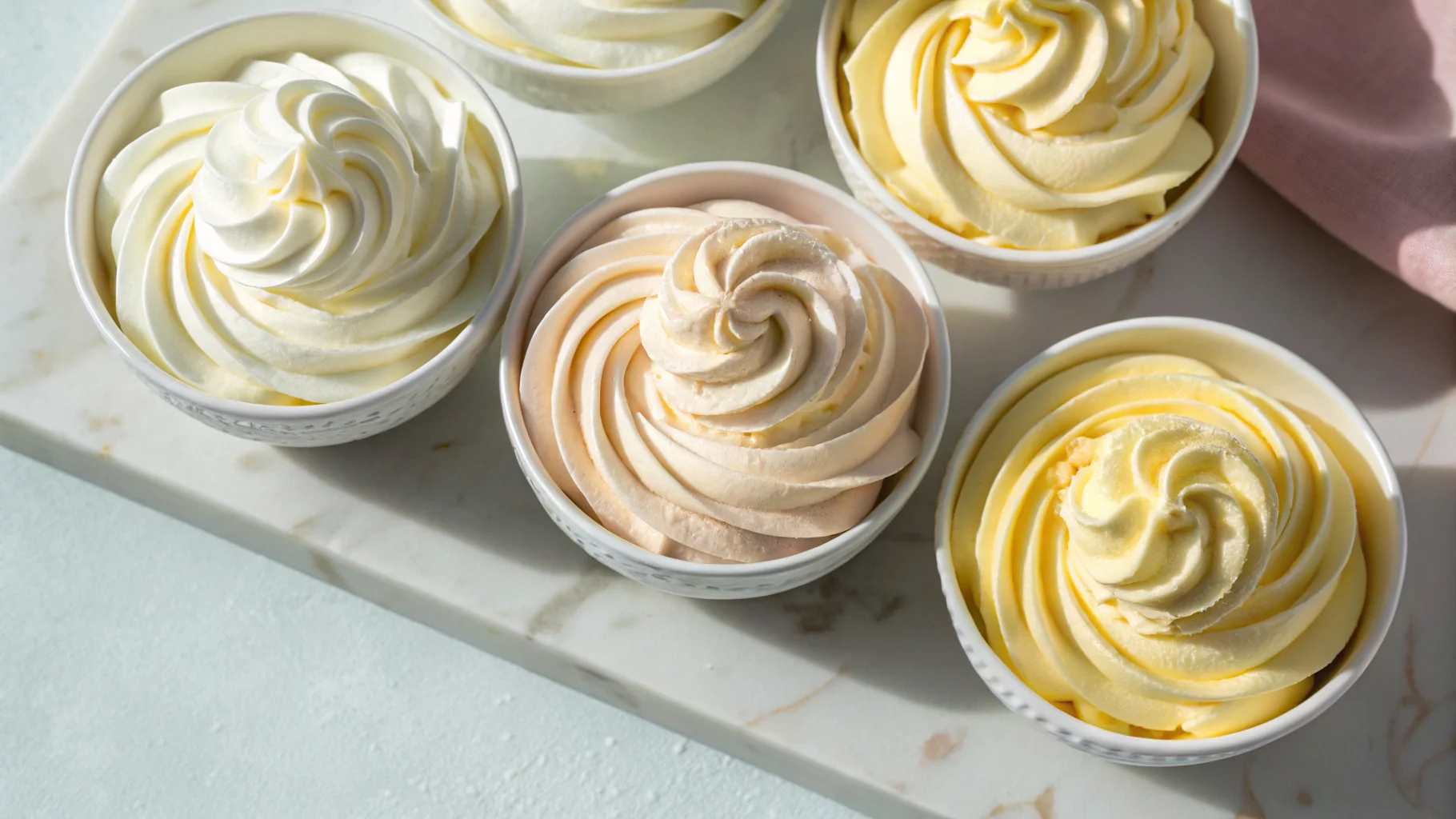Buttercream is the heart and soul of many cakes and pastries, offering a silky texture and rich flavor. But not all buttercreams are created equal! Some are as easy as whipping butter and sugar together, while others demand precise techniques, careful temperature control, and even a bit of courage.
So, what is the hardest buttercream to make? The answer depends on a few factors—stability, complexity, and risk of failure. In this article, we’ll explore the various types of buttercream, ranking them by difficulty and uncovering what makes some trickier than others.
We’ll dive into Swiss, Italian, and French meringue buttercreams, which require delicate emulsification and temperature control, making them a real challenge for bakers. You’ll learn about common mistakes, troubleshooting tips, and expert techniques to help you master even the most demanding buttercream.
Table of contents
- Introduction to Buttercream and Its Challenges
- Ranking by Difficulty
- Swiss Meringue Buttercream – A Delicate Balance
- Italian Meringue Buttercream – Mastering the Sugar Syrup
- French BC – The Trickiest of All?
- The Science Behind Hard Buttercreams
- Pro Tips for Mastering Difficult Buttercreams
- FAQs – Answering Common Buttercream Questions
- Conclusion
Introduction to Buttercream and Its Challenges
What is Buttercream?
Buttercream is a type of frosting made by whipping butter with sugar and sometimes eggs, milk, or syrup. It’s beloved for its creamy texture and ability to hold decorative piping, making it a go-to for cakes and cupcakes.
There are two main categories of buttercream:
- Simple Buttercreams – These are the easiest to make and typically involve beating butter with powdered sugar. American buttercream falls into this category.
- True Buttercreams – These require more advanced techniques, often involving egg whites, yolks, or cooked sugar syrup. Examples include Swiss, Italian, and French meringue buttercreams.
Different Types of Buttercream: Simple vs. True Buttercreams
| Buttercream Type | Difficulty Level | Ingredients | Stability |
|---|---|---|---|
| American | Easy | Butter, powdered sugar | High (forms a crust) |
| Russian | Easy-Moderate | Butter, condensed milk | Moderate |
| Ermine | Moderate | Flour, sugar, milk, butter | High |
| Swiss Meringue | Moderate-Hard | Egg whites, sugar, butter | High |
| Italian Meringue | Hard | Sugar syrup, egg whites, butter | Very High |
| French | Very Hard | Egg yolks, sugar syrup, butter | Moderate |
While simple buttercreams are beginner-friendly, true buttercreams require a strong understanding of temperature control, emulsification, and timing.
What Makes a Buttercream Difficult to Make?
The hardest buttercreams share a few common traits:
- Temperature Sensitivity – Meringue-based buttercreams rely on precise heat control. If the sugar syrup is too hot or the butter is too cold, the buttercream can curdle or melt.
- Emulsification Challenges – Butter and water-based ingredients don’t naturally mix. If not incorporated correctly, the mixture can split or become greasy.
- Risk of Overmixing – Some buttercreams require gentle handling. Overbeating can cause air bubbles or grainy textures.
Swiss, Italian, and French meringue buttercreams are particularly tricky because they involve cooking sugar syrups or heating egg whites. These methods require patience, precision, and a bit of experience.
In the next section, we’ll rank buttercreams based on their difficulty and see which one takes the crown as the hardest buttercream to make!

Ranking by Difficulty
Not all buttercreams are created equal. Some are easy enough for beginners, while others demand precise technique, patience, and experience. So, what is the hardest buttercream to make? To answer this, let’s rank different buttercreams from the simplest to the most challenging.
Easiest Buttercream to Make: American Buttercream
If you’re new to baking, American buttercream is the best place to start. It’s made by beating butter and powdered sugar together, with a splash of milk or cream for smoothness. No cooking, no delicate steps—just mix and go!
✔️ Why it’s easy:
- No need for special equipment—just a bowl and a mixer.
- Stable at room temperature and holds its shape well.
- Easy to adjust sweetness and consistency.
❌ Challenges:
- Can be overly sweet.
- Lacks the silky texture of more advanced buttercreams.
Moderate-Difficulty Buttercreams: Russian and Ermine Buttercreams
Russian buttercream is slightly more complex, made with butter and sweetened condensed milk. It has a silky texture but can become too soft if the butter isn’t at the right temperature.
Ermine buttercream (also called “boiled milk frosting”) is made by cooking flour, sugar, and milk into a pudding-like paste before whipping in butter. This process creates a light, whipped texture.
✔️ Why they’re moderately difficult:
- Require careful temperature control to avoid curdling.
- Must be whipped properly to get a smooth, airy consistency.
Most Difficult Buttercreams: Swiss, Italian, and French Meringue Buttercreams
Now we enter the realm of true buttercreams, where precision is key. Swiss, Italian, and French meringue buttercreams are all made using eggs and sugar, but each has its own challenges.
| Buttercream | Difficulty Level | Key Challenge |
|---|---|---|
| Swiss Meringue | Moderate-Hard | Heating egg whites without scrambling |
| Italian Meringue | Hard | Pouring hot sugar syrup into egg whites without cooking them |
| French Buttercream | Very Hard | Whipping egg yolks with hot sugar syrup without breaking the emulsion |
These buttercreams demand perfect timing, steady hands, and precise temperature control. But which one is the hardest? Many bakers argue that French buttercream takes the crown!
Swiss Meringue Buttercream – A Delicate Balance
Swiss meringue buttercream (SMBC) is one of the most beloved frostings among professional bakers. It’s silky, not overly sweet, and pipes beautifully. However, it’s also one of the trickiest to get right.
So, what is the hardest buttercream to make? Many would say Swiss meringue is high on the list because it requires cooking egg whites, whipping to a stable meringue, and slowly adding butter without breaking the emulsion.
How Swiss Meringue Buttercream is Made
SMBC is made by:
- Gently heating egg whites and sugar over a double boiler until the sugar dissolves (without cooking the eggs!).
- Whipping the mixture into a stiff meringue to create a light, airy base.
- Slowly adding butter while continuing to whip, ensuring a smooth, creamy texture.
Common Mistakes and How to Fix Them
Even experienced bakers struggle with SMBC. Here are some common pitfalls and fixes:
❌ Egg whites won’t whip up properly.
✔️ Ensure the mixing bowl is grease-free and there’s no trace of egg yolk.
❌ Looks curdled or soupy.
✔️ If too cold, let it mix longer or warm slightly. If too warm, chill briefly and rewhip.
❌ Grainy texture from undissolved sugar.
✔️ Make sure the sugar is completely melted before whipping the meringue.
Why It’s Considered Challenging for Beginners
Swiss meringue buttercream isn’t just about following a recipe. It requires:
- Precise heating—too hot, and the eggs cook; too cool, and the sugar won’t dissolve.
- Patience when whipping—rush it, and the buttercream may collapse.
- Experience—knowing when to troubleshoot issues on the fly.
Despite its difficulty, SMBC is worth mastering. Once perfected, it becomes a baker’s best friend for cakes, cupcakes, and elegant designs.
Up next: Italian meringue buttercream—an even trickier challenge!
Italian Meringue Buttercream – Mastering the Sugar Syrup
If Swiss meringue buttercream is tricky, Italian meringue buttercream (IMBC) takes things to another level. Many professional bakers consider it the most stable and refined buttercream, but its preparation requires precision, patience, and a steady hand. So, what is the hardest buttercream to make? Many argue that Italian meringue is a top contender because of its sugar syrup technique.
What Makes Italian Meringue Buttercream Difficult?
Unlike Swiss meringue, where sugar dissolves directly in egg whites, IMBC requires cooking sugar syrup to 240°F (115°C) and pouring it into whipped egg whites. Sounds simple? Here’s what makes it hard:
- The sugar syrup must reach the right temperature—too cool, and it won’t stabilize the meringue; too hot, and it can cook the eggs.
- The syrup must be poured slowly and steadily into the whipped egg whites while mixing at high speed. Pour too fast, and you’ll end up with scrambled eggs!
- The butter must be added at the perfect time—too soon, and the meringue collapses; too late, and it won’t emulsify properly.
Step-by-Step Guide to Making Italian Meringue Buttercream
- Heat the sugar syrup – Combine granulated sugar and water in a saucepan and heat it to 240°F (115°C) using a candy thermometer.
- Whip the egg whites – Beat room-temperature egg whites in a stand mixer until soft peaks form.
- Pour in the syrup – Slowly drizzle the hot syrup into the egg whites while the mixer runs at high speed.
- Cool the meringue – Continue whipping until the bowl feels cool to the touch.
- Add butter gradually – Introduce room-temperature butter, one piece at a time, until the buttercream is smooth and fluffy.
Troubleshooting Italian Meringue BC
This BC is notorious for going wrong. Here’s how to fix common problems:
❌ The meringue deflates after adding syrup.
✔️ The sugar syrup was too hot or poured too quickly. Always pour in a slow, steady stream.
❌ Buttercream looks curdled after adding butter.
✔️ Keep mixing! It usually comes together with continued whipping.
❌ Buttercream is too soft and won’t hold its shape.
✔️ Refrigerate for 10 minutes, then rewhip to firm it up.
Mastering Italian meringue BC requires patience, but it rewards you with a stable, silky, and luxurious frosting perfect for wedding cakes and high-end desserts.
Next, we’ll explore another tricky contender: French buttercream, the richest and most temperamental of them all!
French BC – The Trickiest of All?
If you thought Italian meringue buttercream was tough, wait until you meet FBC. Unlike Swiss and Italian versions that use egg whites, French buttercream is made with egg yolks, creating a super rich, custard-like texture. However, this comes with challenges that make many bakers wonder, what is the hardest buttercream to make?
How French Buttercream Differs from Other Meringue-Based Buttercreams
French buttercream is unique because it’s made by whipping egg yolks with hot sugar syrup, then adding butter. The result? A decadently creamy, slightly yellow buttercream that melts in your mouth.
However, FBC is:
- Less stable than other buttercreams, making it tricky for piping.
- Sensitive to temperature, as yolks can curdle easily.
- Prone to breaking if the ingredients aren’t incorporated properly.
Challenges in Making French Buttercream
The biggest hurdle? The sugar syrup technique is even riskier than Italian meringue.
Here’s why:
- Yolks are more delicate than egg whites and can easily scramble.
- The sugar syrup must be poured slowly while whipping at high speed.
- Because of its high butter content, FBC is very soft and can become greasy if overmixed.
How to Perfect French BC Every Time
- Prepare the sugar syrup – Heat sugar and water to 240°F (115°C).
- Whip the egg yolks – Beat until pale and thick.
- Slowly add the syrup – Drizzle it in very slowly while whipping.
- Cool the mixture – Continue mixing until it reaches room temperature.
- Incorporate butter – Add soft butter a little at a time, whipping until smooth.
✅ Pro Tip: If the BC looks too thin, chill it briefly and rewhip.

The Science Behind Hard Buttercreams
Buttercream isn’t just about taste—it’s a delicate balance of fat, sugar, and liquid. Some buttercreams are easy to whip up, while others require precise temperature control, emulsification, and patience. But what is the hardest buttercream to make? The answer lies in the science of stability and texture.
How Temperature Affects Buttercream Stability
One of the biggest challenges in making buttercream is temperature control. If your ingredients aren’t at the right temperature, you could end up with:
- Curdled buttercream (too cold)
- Soupy or greasy buttercream (too warm)
- Sugar crystals that don’t dissolve properly
Here’s how different temperatures impact buttercream:
- Butter too cold? The mixture will look lumpy and refuse to emulsify.
- Butter too warm? The buttercream will melt and become runny.
- Sugar syrup too hot? It can cook the eggs, leading to scrambled bits.
✅ Pro Tip: Always bring butter to room temperature (about 68°F–72°F or 20°C–22°C) before using it.
The Role of Emulsification in Difficult Buttercreams
Some buttercreams, like American BC, are simple because they don’t require emulsification. But Swiss, Italian, and French buttercreams rely on combining fat and water-based ingredients smoothly, which can be tricky.
- Swiss Meringue BC: Egg whites and sugar form a stable base, making it easier to emulsify.
- Italian Meringue BC: The hot sugar syrup stabilizes the meringue but needs precise handling.
- French BC: Egg yolks don’t whip up as easily, making it the most fragile and difficult to stabilize.
The reason French BC is often called the hardest is that egg yolks contain more fat than egg whites, making them harder to whip into a stable structure. This makes it more prone to breaking.
Up next, we’ll cover expert tips to help you master even the most challenging buttercreams!

Pro Tips for Mastering Difficult Buttercreams
Mastering this recipes takes practice, but with the right techniques, you can avoid the most common pitfalls. Whether you’re making Swiss, Italian, or French, these expert tips will help you achieve the perfect texture every time.
Essential Equipment for Meringue-Based Buttercreams
Using the right tools can make or break your BC. Here’s what you’ll need:
✔️ Stand mixer – A hand mixer might work, but a stand mixer makes the process much easier.
✔️ Candy thermometer – Crucial for Swiss and Italian meringue BC to heat sugar correctly.
✔️ Heatproof bowl – For gently heating egg whites without scrambling them.
✔️ Fine-mesh sieve – To strain out any undissolved sugar granules.
How to Prevent Curdling and Separation
Many bakers struggle with curdled or broken buttercream, but the fix is easier than you think!
❌ Buttercream looks curdled after adding butter.
✔️ Keep mixing—it usually comes together after a few minutes.
❌ Buttercream is too soft and runny.
✔️ Pop it in the fridge for 10–15 minutes, then whip again.
❌ Sugar syrup hardened before mixing.
✔️ Try again and pour the syrup slowly in a thin stream.
Storage and Reheating Tips for Delicate Buttercreams
If you’re making buttercream ahead of time, proper storage is key!
- Refrigerate for up to a week, but bring to room temperature before re-whipping.
- Freeze for up to three months in an airtight container.
- Rewhip after thawing—don’t microwave to soften, as this can cause separation.
By following these tips, you’ll be able to tackle even the hardest buttercream recipes with confidence.
FAQs – Answering Common Buttercream Questions
When making buttercream, things don’t always go as planned. Whether you’re dealing with curdled frosting, soupy texture, or grainy sugar, you’re not alone! Below, we answer some of the most frequently asked questions about buttercream.
What is the most stable BC for hot weather?
If you need a buttercream that can withstand warm temperatures, Italian meringue buttercream (IMBC) is your best bet. The cooked sugar syrup stabilizes the meringue, making it less likely to melt.
Other options include:
- American (high in sugar, forms a crust).
- Ermine (more stable than American but lighter).
Avoid French buttercream, as it contains egg yolks and melts quickly.
Why does my meringue BC turn soupy?
If your Swiss or Italian meringue buttercream looks like a melted mess, the butter was likely too warm when added. Try chilling it for 10–15 minutes, then whipping again.
Can I fix split or broken cream?
Yes! A broken buttercream is usually a result of temperature issues. Here’s how to fix it:
- If it looks curdled – Keep whipping! Most of the time, the buttercream will come together with extra mixing.
- If it looks too thin – Chill it slightly and then whip again.
- If it looks greasy – Warm it gently over a double boiler for a few seconds, then re-whip.
What is the best buttercream for wedding cakes?
Wedding cakes require a smooth, stable buttercream that holds up well over time. The top choices are:
✔️ Italian meringue buttercream – Best for stability and smooth finish.
✔️ Swiss meringue buttercream – Silky, easy to work with, and not overly sweet.
✔️ American buttercream – Good for decorations and holds shape well.
What is the hardest buttercream to make?
Many bakers agree that French buttercream is the hardest to master because it requires cooking sugar syrup and whipping egg yolks. It’s also more delicate than other buttercreams, making it prone to melting and breaking. However, both Italian and Swiss meringue buttercreams require careful temperature control and precision, making them challenging as well.
Still struggling? You might want to start with a simpler BC first! Try this Russian Buttercream Recipe before tackling the advanced ones.
Conclusion
Summary of Key Points
Throughout this guide, we’ve explored different buttercreams, ranked them by difficulty, and broken down their challenges.
- American BC is the easiest and perfect for beginners.
- Swiss meringue BC is smooth but requires heating egg whites correctly.
- Italian meringue BC involves hot sugar syrup, making it harder to control.
- French BC is the most fragile, as it’s made with egg yolks instead of whites.
So, what is the hardest BC to make? While French BC is the trickiest due to its delicate nature, Italian meringue BC is also highly challenging because of its precise sugar syrup technique.
Final Thoughts on Mastering Difficult Buttercreams
If you’re new to this, start simple! Practice with Swiss BC before moving on to Italian or French BC. With patience, the right tools, and a little troubleshooting, you’ll be able to master even the toughest recipes.

